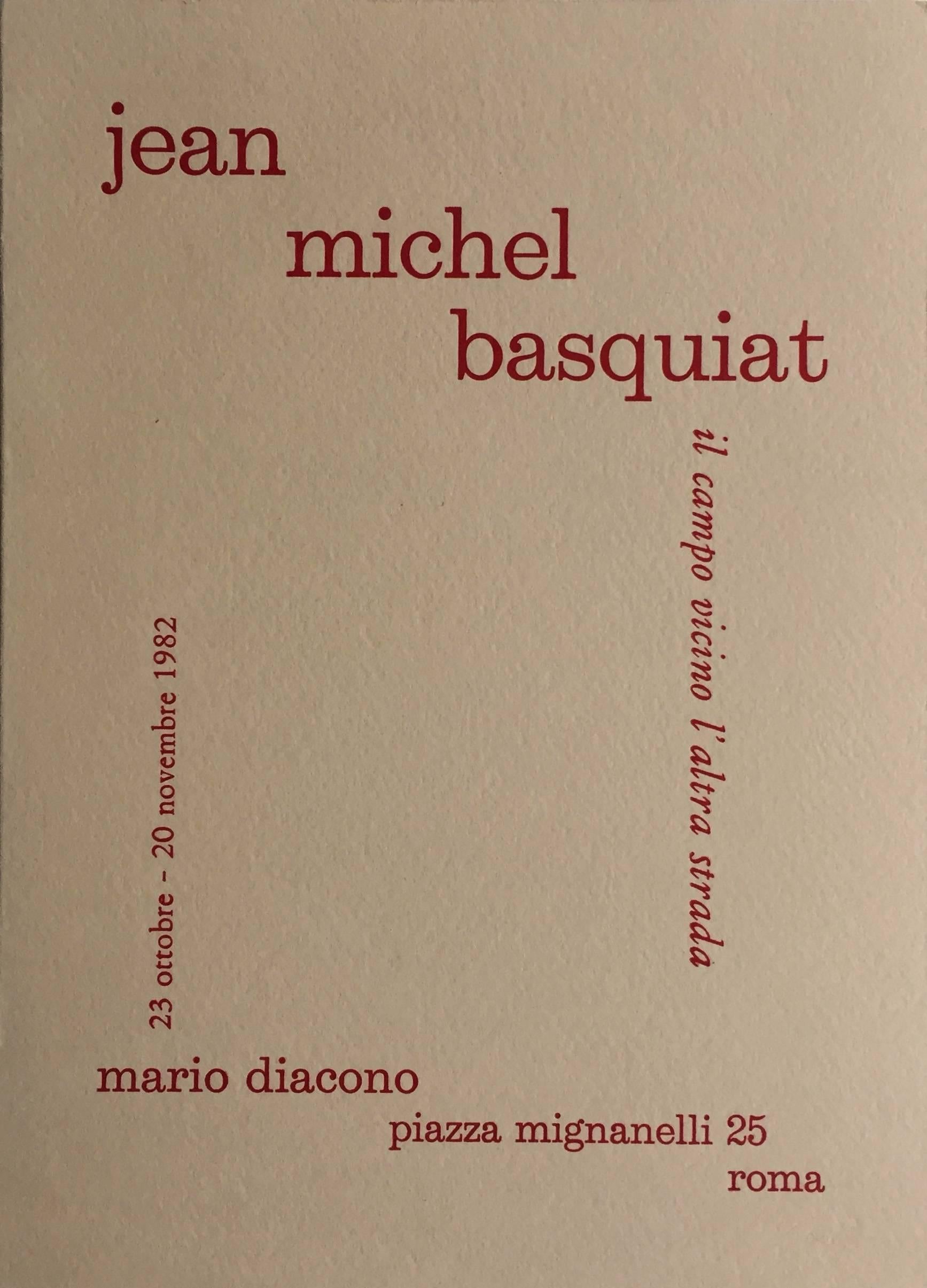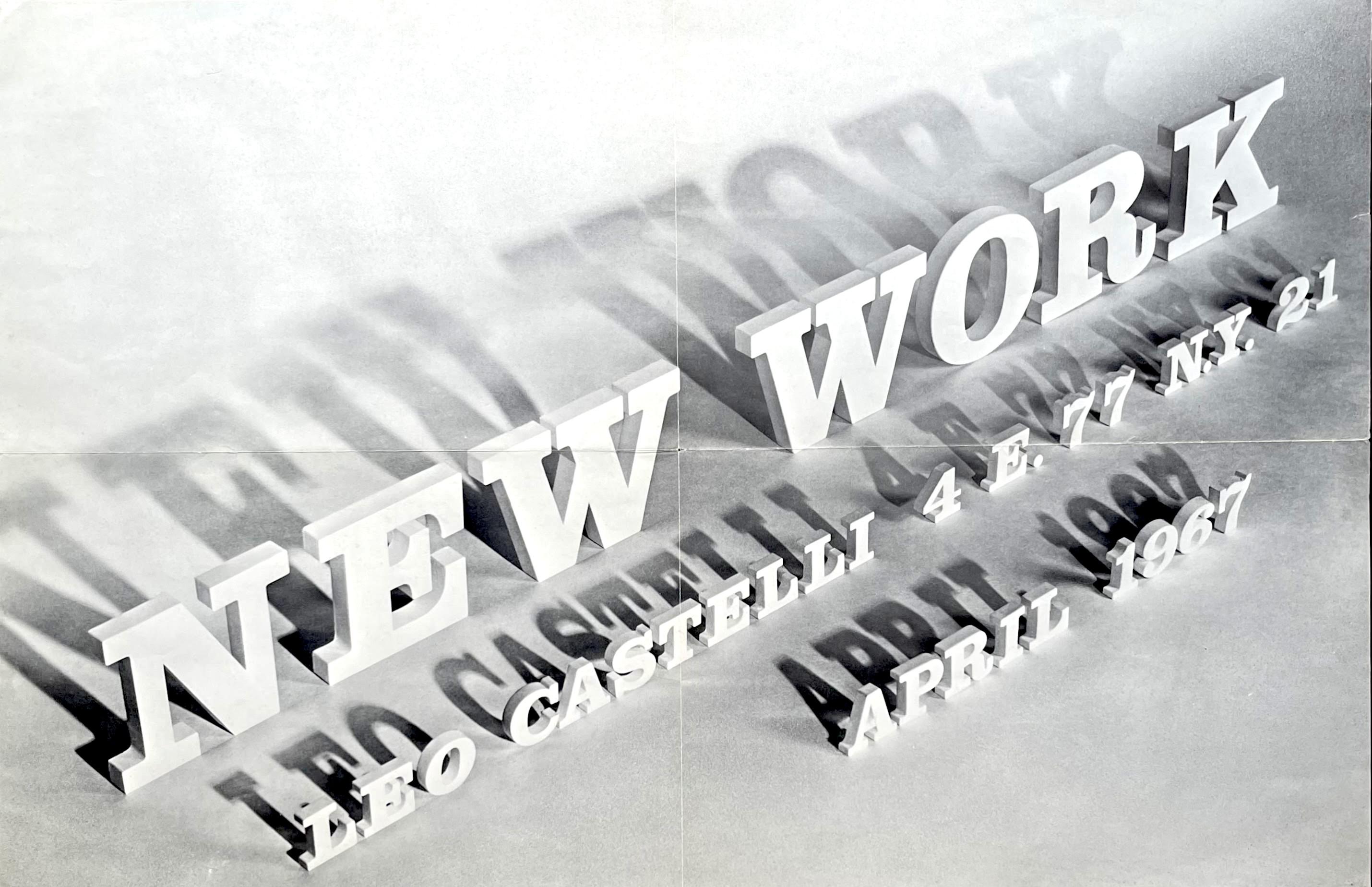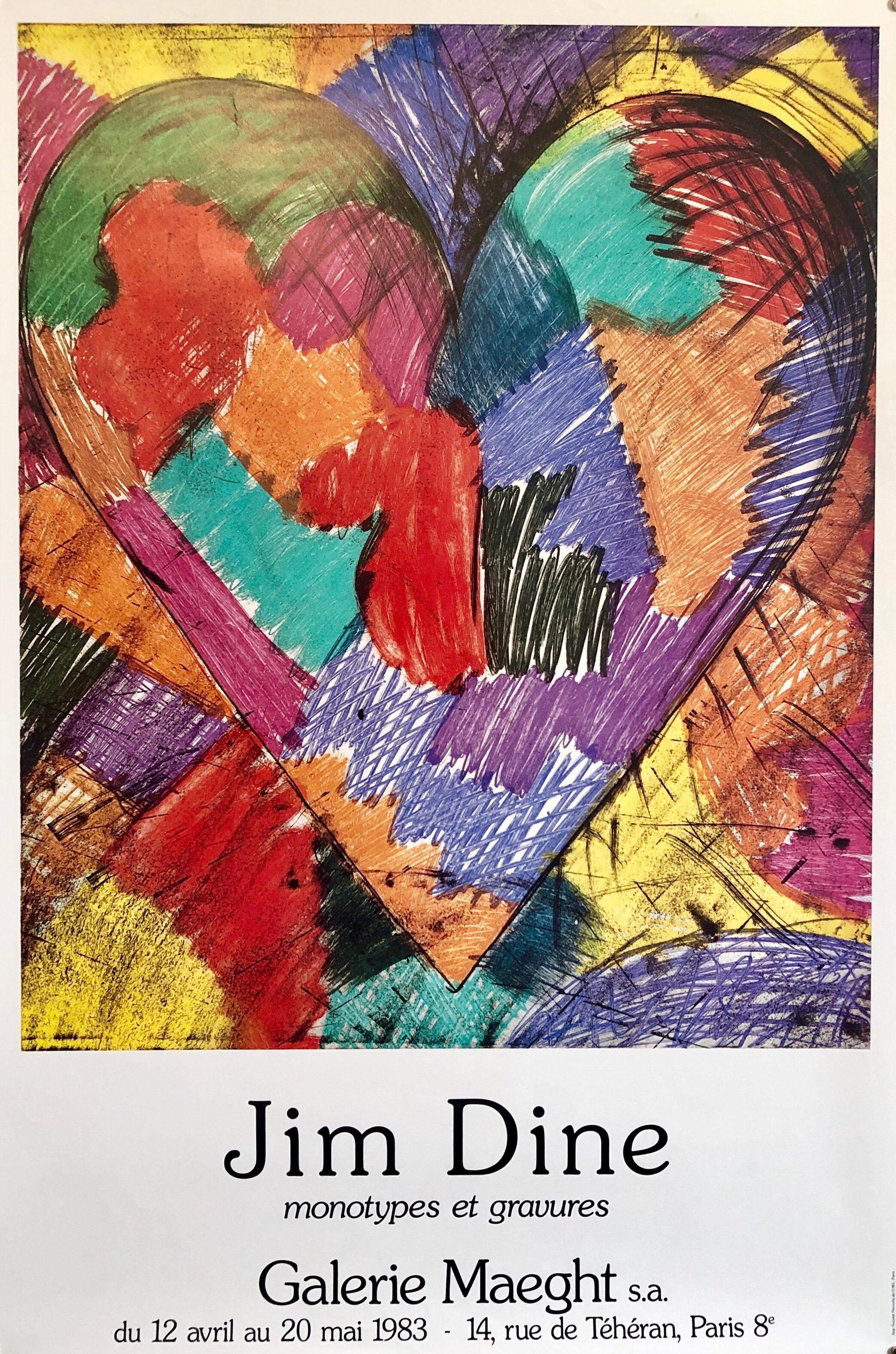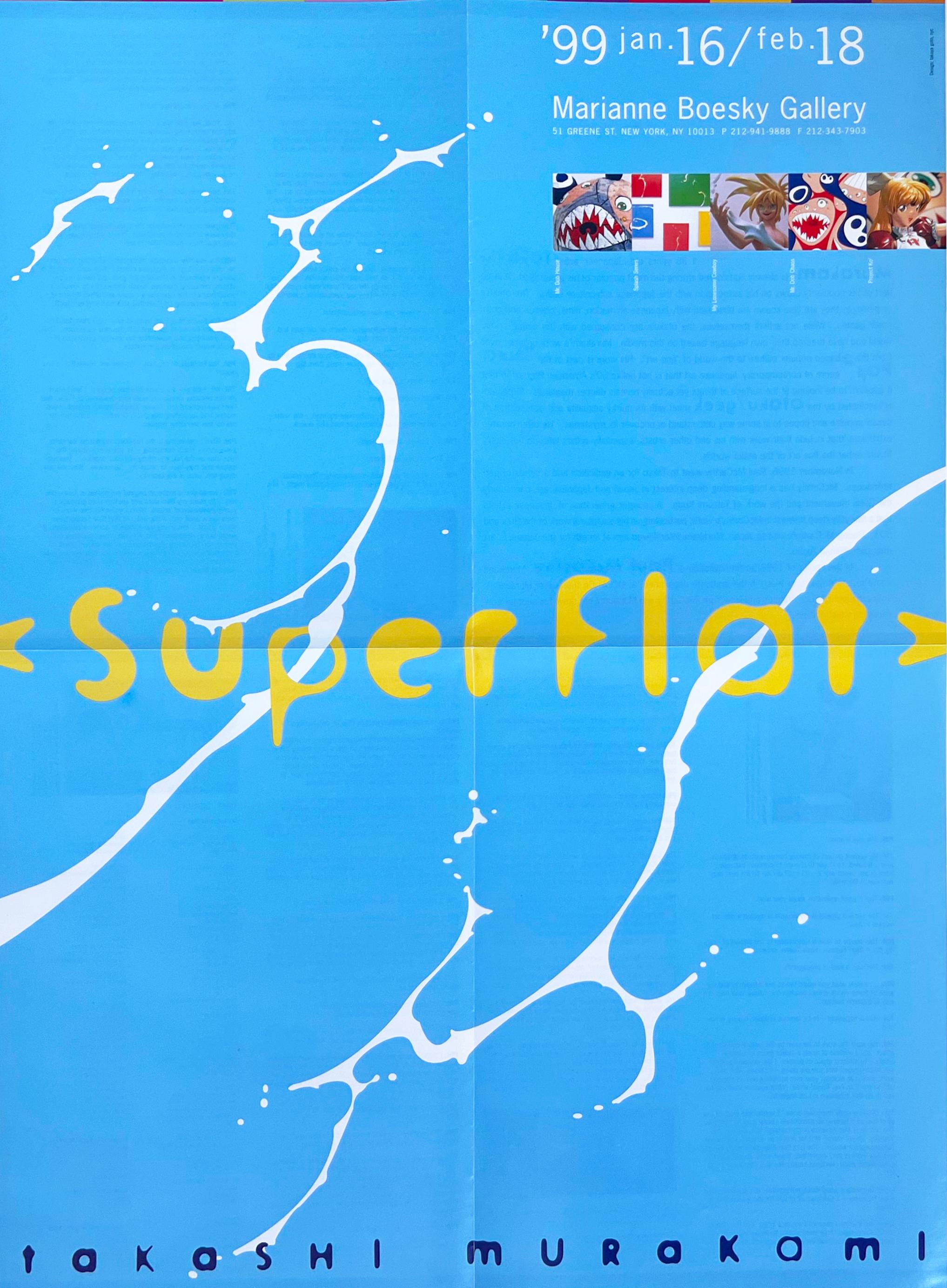Items Similar to As I Opened Fire, Roy Lichtenstein
Want more images or videos?
Request additional images or videos from the seller
1 of 5
(after) Roy LichtensteinAs I Opened Fire, Roy Lichtenstein2002
2002
About the Item
This offset lithograph in colors in three panels was created in 2002 and is from the unsigned edition of unknown size measuring
25 x 20 ½ in. (63.5 x 52 cm.) each and 25 x 62 in. (63.5 x 157.5 cm.) overall. (Published by the Stedelijk Museum, Amsterdam). Available for local pick up from Michael Lisi Contemporary Art, NYC.
- Creator:(after) Roy Lichtenstein (1928, American)
- Creation Year:2002
- Dimensions:Height: 25 in (63.5 cm)Width: 20.5 in (52.07 cm)
- Medium:
- Movement & Style:
- Period:
- Framing:Framing Options Available
- Condition:
- Gallery Location:New York, NY
- Reference Number:1stDibs: LU5545119841
(after) Roy Lichtenstein
Roy Fox Lichtenstein (1923 – 1997) was an American pop artist. During the 1960s, he became a leading figure in the new art movement. He was heavily inspired by the comic strip as a visual medium, in particular the presence of the "Ben-Day" dots that are a result of the color and tone distillation of inexpensive printing. He described pop art as "not 'American' painting but actually industrial painting". Lichtenstein had his first one-man show in New York in 1962; the entire collection was bought by influential collectors before the show even opened. He would never take himself too seriously: "I think my work is different from comic strips — but I wouldn't call it transformation; I don't think that whatever is meant by it is important to art." When first exhibited, many art critics challenged its originality. His work was harshly criticized as vulgar and empty. The title of a Life magazine article in 1964 asked, “Is He the Worst Artist in the U.S.?” Lichtenstein responded to these claims by offering responses such as: "The closer my work is to the original, the more threatening and critical the content. However, my work is entirely transformed in that my purpose and perception are entirely different. I think my paintings are critically transformed, but it would be difficult to prove it by any rational line of argument."
About the Seller
5.0
Vetted Seller
These experienced sellers undergo a comprehensive evaluation by our team of in-house experts.
Established in 2009
1stDibs seller since 2014
318 sales on 1stDibs
Typical response time: 13 hours
- ShippingRetrieving quote...Ships From: New York, NY
- Return PolicyThis item cannot be returned.
More From This SellerView All
- Bicentennial, by Roy LichtensteinBy Roy LichtensteinLocated in New York, NYIncluded in America: The Third Century portfolio, Roy Lichtenstein created Bicentennial as an original color lithograph with screenprint in 1975, conceived to celebrate the 200th ann...Category
20th Century Pop Art More Prints
MaterialsLithograph, Screen
- Flower Ball BrownBy Takashi MurakamiLocated in New York, NYCreated by Takashi Murakami in 2010, Flower Ball Brown is an offset lithograph in colors. The artwork is hand-signed by the artist and numbered in ink. Me...Category
21st Century and Contemporary Pop Art More Prints
MaterialsLithograph
- Flower Ball (3D): There is Nothing Eternal in this World....By Takashi MurakamiLocated in New York, NYCreated by Takashi Murakami in 2013, Flower Ball (3D): There is Nothing Eternal in this World. That is Why You Are Beautiful is an offset lithograph in colors. The artwork is hand-si...Category
21st Century and Contemporary Pop Art More Prints
MaterialsLithograph
- Pop Shop I (B)By Keith HaringLocated in New York, NYAn early and iconic screenprint by the artist created in 1987, Keith Haring’s, Pop Shop I (B) is an original color screenprint measuring 12 x 15 in. (30.5 x 38.1 cm), unframed, the a...Category
20th Century Pop Art Prints and Multiples
MaterialsScreen
- American Indian Theme IIIBy Roy LichtensteinLocated in New York, NYCreated in 1980 by Roy Lichtenstein as part of a portfolio of prints known as The American Indian Theme Series, this original woodcut in colors, is...Category
20th Century Pop Art Abstract Prints
MaterialsWoodcut
- Brooklyn BridgeBy Andy WarholLocated in New York, NYPublished by the 1983 Brooklyn Bridge Centennial Commission, NY, Andy Warhol’s, Brooklyn Bridge is a beautiful image of this iconic New York landmark. An original color screenprint ...Category
20th Century Pop Art Landscape Prints
MaterialsScreen
You May Also Like
- 1982 Basquiat Rome announcement (Jean-Michel Basquiat 1982)By Jean-Michel BasquiatLocated in NEW YORK, NYBasquiat Rome 1982: Rare, highly sought-after original catalog/exhibition card to Basquiat's 1982 Rome show at Galleria Mario Diacono, Italy. Opening to ...Category
1980s Pop Art Prints and Multiples
MaterialsOffset, Lithograph
- Limited Ed. St. Louis Art museum poster Hand Signed & dated by Roy LichtensteinBy Roy LichtensteinLocated in New York, NYRoy Lichtenstein 1970-1980 (Hand Signed and dated by Roy Lichtenstein), 1981 Offset lithograph. Hand signed and dated in ink Hand-signed by artist, H...Category
1980s Pop Art Abstract Prints
MaterialsInk, Lithograph, Offset, Pencil, Graphite
- Canadian Post Modern Pop Art Lithograph Vintage Poster Memphis Galerie MaeghtBy Jean-Paul RiopelleLocated in Surfside, FLVintage gallery exhibition poster. The Galerie Maeght is a gallery of modern art in Paris, France, and Barcelona, Catalonia, Spain. The gallery was founded in 1936 in Cannes. The Paris gallery was started in 1946 by Aimé Maeght. The artists exhibited are mainly from France and Spain. Since 1945, the gallery has presented the greatest modern artists such as Matisse, Bonnard, Braque, Miró, and Calder. In 1956, Adrien Maeght opened a new parisian venue. The second generation of “Maeght” artists was born: Bazaine, Andre Derain, Giacometti, Kelly, Raoul Ubac, then Riopelle, Antoni Tapies, Pol Bury and Adami, among others. Jean-Paul Riopelle, CC GOQ (7 October 1923 – 12 March 2002) was a painter and sculptor from Quebec, Canada. He became the first Canadian painter (since James Wilson Morrice) to attain widespread international recognition. Born in Montreal, Riopelle began drawing lessons in 1933 and continued through 1938. He studied engineering, architecture and photography at the école polytechnique in 1941. In 1942 he enrolled at the École des beaux-arts de Montréal but shifted his studies to the less academic école du Meuble, graduating in 1945. He studied under Paul-Émile Borduas in the 1940s and was a member of Les Automatistes movement. Breaking with traditional conventions in 1945 after reading André Breton's Le Surréalisme et la Peinture, he began experimenting with non-objective (or non-representational) painting. He was one of the signers of the Refus global manifesto. In 1947 Riopelle moved to Paris and continued his career as an artist, where, after a brief association with the surrealists (he was the only Canadian to exhibit with them) he capitalized on his image as a "wild Canadian". His first solo exhibition took place in 1949 at the Surrealist meeting place, Galerie La Dragonne in Paris. Riopelle married Françoise Lespérance in 1946; the couple had two daughters but separated in 1953. In 1959 he began a relationship with the American painter Joan Mitchell, Living together throughout the 1960s, they kept separate homes and studios near Giverny, where Monet had lived. They influenced one another greatly, as much intellectually as artistically, but their relationship was a stormy one, fueled by alcohol. The relationship ended in 1979. His 1992 painting Hommage à Rosa Luxemburg is Riopelle's tribute to Mitchell, who died that year, and is regarded as a high point of his later work. Riopelle's style in the 1940s changed quickly from Surrealism to Lyrical Abstraction (related to abstract expressionism), in which he used myriad tumultuous cubes and triangles of multicolored elements, facetted with a palette knife, spatula, or trowel, on often large canvases to create powerful atmospheres. The presence of long filaments of paint in his painting from 1948 through the early 1950s[8] has often been seen as resulting from a dripping technique like that of Jackson Pollock. Rather, the creation of such effects came from the act of throwing, with a palette knife or brush, large quantities of paint onto the stretched canvas. Riopelle's voluminous impasto became just as important as color. His oil painting technique allowed him to paint thick layers, producing peaks and troughs as copious amounts of paint were applied to the surface of the canvas. Riopelle, though, claimed that the heavy impasto was unintentional: "When I begin a painting," he said, "I always hope to complete it in a few strokes, starting with the first colours I daub down anywhere and anyhow. But it never works, so I add more, without realizing it. I have never wanted to paint thickly, paint tubes are much too expensive. But one way or another, the painting has to be done. When I learn how to paint better, I will paint less thickly." When Riopelle started painting, he would attempt to finish the work in one session, preparing all the color he needed before hand: "I would even go as far to say—obviously I don't use a palette, but the idea of a palette or a selection of colors that is not mine makes me uncomfortable, because when I work, I can't waste my time searching for them. It has to work right away." A third element, range of gloss, in addition to color and volume, plays a crucial role in Riopelle's oil paintings. Paints are juxtaposed so that light is reflected off the surface not just in different directions but with varying intensity, depending on the naturally occurring gloss finish (he did not varnish his paintings). These three elements; color, volume, and range of gloss, would form the basis of his oil painting technique throughout his long and prolific career. Riopelle received an Honorable Mention at the 1952 São Paulo Art Biennial. In 1953 he showed at the Younger European Painters exhibition at the Solomon R. Guggenheim Museum in New York City. The following year Riopelle began exhibiting at the Pierre Matisse Gallery in New York. In 1954, works by Riopelle, along with those of B. C. Binning and Paul-Émile Borduas represented Canada at the Venice Biennale. He was the sole artist representing Canada at the 1962 Venice Biennale in an exhibit curated by Charles Comfort...Category
1970s Pop Art Abstract Prints
MaterialsLithograph, Offset
- Leo Castelli Gallery poster (Roy Lichtenstein, Frank Stella, John Chamberlain)Located in New York, NYRare collectors item: Roy Lichtenstein, Frank Stella, John Chamberlain New Work, Leo Castelli poster, 1967 Offset lithograph poster invitation with original folds, addressee and post...Category
1960s Pop Art Abstract Prints
MaterialsOffset, Lithograph
- Rainbow Quilt Heart Pop Art Vintage Offset Lithograph Poster Jim Dine, MaeghtBy Jim DineLocated in Surfside, FLJim Dine, Monotypes et Gravures, Galerie Maeght, Paris, 1983. Vintage Offset Lithograph Poster American contemporary pop art. A colorful heart quilt in a rainbow of colors. Jim Dine...Category
1980s Pop Art More Prints
MaterialsLithograph, Offset
- Takashi Murakami 'Superflat' exhibition poster (vintage Takashi Murakami)By Takashi MurakamiLocated in NEW YORK, NYTakashi Murakami Superflat Exhibition Poster 1999: Rare 1990s exhibit poster designed by Murakami and published by Marianne Boesky Gallery New York...Category
21st Century and Contemporary Pop Art Abstract Prints
MaterialsLithograph, Offset
Recently Viewed
View AllMore Ways To Browse
Lichtenstein As I Opened
Roy Lichtenstein As I Opened
As I Opened Fire Lichtenstein
Lichtenstein As I Opened Fire
Roy Lichtenstein As I Opened Fire
Dave Muller
Ettore Greco
Fairey Hpm
Fly O Plane
Grumman Poster
Hamburg Amerika
Harvey Keitel
Ilyayev Slava
Laure Prouvost
Libro Poster
Original Vintage Travel Poster Napoli
Pakistan Vintage Travel Posters
Pilier Antique






